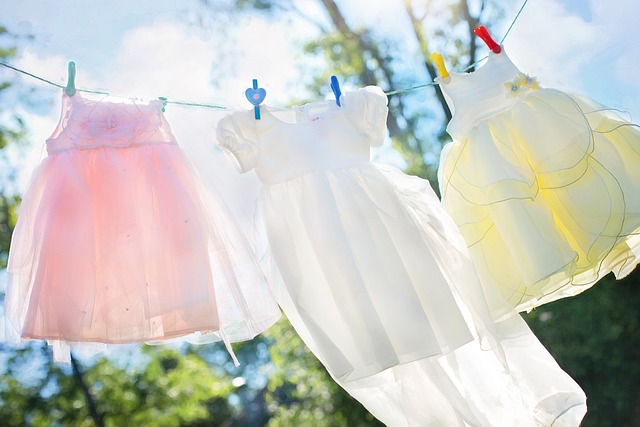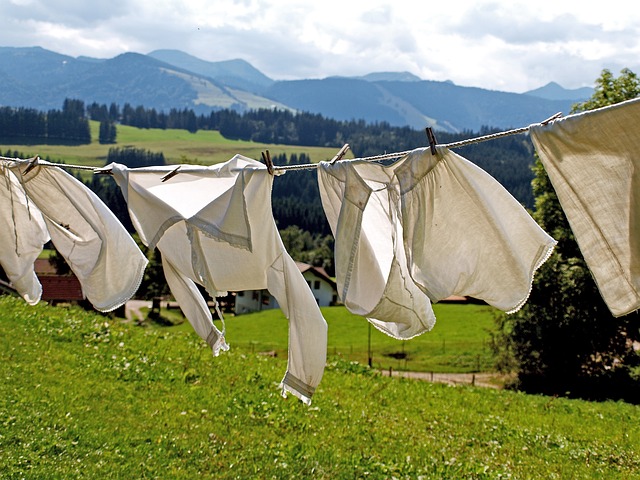
Have you ever wondered how to handwash your clothes? Maybe you’ve encountered a delicate item that can’t go in the washing machine, or you simply prefer the old-fashioned way of washing. Well, fear not! In this article, we will walk you through the steps of handwashing your clothes and share some helpful tips along the way.
First, let’s talk about why handwashing can be beneficial. Not only does it help preserve delicate fabrics, but it also allows you to have more control over the washing process. Plus, it’s a great option if you don’t have access to a washing machine or if you want to save energy. So, if you’re curious about how to successfully handwash your clothes, keep reading!
The process of handwashing your clothes may seem daunting at first, but it’s actually quite simple. All you need is a sink or basin, some mild detergent, and a little bit of time. In our detailed guide, we’ll walk you through each step, from sorting your clothes to drying them properly. We’ll also share some tips on how to remove stubborn stains and odors. By the end of the article, you’ll be equipped with all the knowledge you need to effectively handwash your clothes and keep them looking fresh and clean.
So, whether you’re a beginner or someone looking to improve their handwashing skills, this article is for you. We’ll cover everything from the best techniques to specific care instructions for different types of fabrics. With our tips and guidance, you’ll be able to confidently handwash your clothes and extend their lifespan. Get ready to master the art of handwashing and say goodbye to the hassle of delicate items in the washing machine.
Table of Contents
How to Handwash Your Clothes
Taking care of your clothes is essential in maintaining fabric quality and extending the lifespan of your garments. While machine washing may be convenient, there are times when handwashing is necessary, especially for delicate fabrics or items with special care instructions. In this guide, we will walk you through the step-by-step process of handwashing your clothes, ensuring that your garments are clean, fresh, and well-maintained.
Preparing Your Clothes
Before diving into the handwashing process, it is important to prepare your clothes properly. This includes sorting your clothes, checking garment labels, and removing any stains.
Sorting your clothes
Start by sorting your clothes into different piles based on their color or fabric type. This ensures that you avoid color bleeding or the risk of damaging delicate fabrics. Separate whites, darks, and colors, keeping any delicate items separate from heavier fabrics.
Checking garment labels
Take a close look at the labels on your clothes. These labels provide valuable information regarding the fabric composition, recommended washing instructions, and any precautions you need to take. Make sure to pay attention to any specific instructions, such as handwashing only or using a mild detergent.
Removing stains
Inspect your clothes for any stains and treat them before proceeding with the handwashing process. Pre-treat the stains using a stain remover or a gentle soap. Allow the stain remover to work on the fabric for a few minutes before proceeding.
Choosing the Right Soap
Selecting the appropriate soap is crucial in ensuring that your clothes are effectively cleaned without causing any damage. Understanding different soap options, choosing a mild detergent, and avoiding harsh chemicals are key aspects to consider.
Understanding different soap options
There are various types of soaps available on the market, each designed for different purposes. Some soaps contain chemicals that may be too harsh for certain fabrics or may cause allergic reactions. Choose a soap specifically formulated for handwashing delicate fabrics or opt for a mild detergent.
Choosing a mild detergent
Opt for a mild detergent that is free from bleach, enzymes, and added fragrances. These additives can be harsh on fabrics and may cause discoloration or irritation. Look for a detergent that is labeled as suitable for handwashing and gentle on fabrics.
Avoiding harsh chemicals
It is crucial to avoid using harsh chemicals, such as bleach or strong stain removers, when handwashing your clothes. These chemicals can cause damage to delicate fabrics or alter the color of your garments. Stick to mild soaps and detergents to ensure the longevity of your clothes.

Filling a Basin or Sink
The next step is to select an appropriate basin or sink, fill it with warm water, and add soap to create the washing solution.
Selecting an appropriate basin
Choose a basin or sink that is spacious enough to comfortably accommodate your clothes. Avoid using basins made of abrasive materials that may damage your garments. A plastic or stainless steel basin is ideal for handwashing.
Filling the sink with warm water
Fill the basin or sink with warm water. The water temperature should be comfortable to touch but not too hot to cause fading or shrinkage. Warm water helps in loosening dirt and stains, ensuring effective cleaning.
Adding soap to the water
Add the mild detergent or soap to the warm water. Follow the instructions on the soap packaging to determine the correct amount to use. Gently swirl the water to create a soapy solution. Make sure the soap is thoroughly dissolved before proceeding to the next step.
Handwashing Technique
Now that you have prepared your clothes and created the washing solution, it’s time to start handwashing your garments.
Wetting your clothes
Submerge your clothes in the soapy water, ensuring that each garment is fully wet. Gently agitate the water with your hands to distribute the soap evenly. Allow your clothes to soak for a few minutes to loosen any dirt or stains.
Applying soap to the fabric
For heavily soiled areas or stains, apply a small amount of gentle soap directly to the fabric. Gently rub the soap into the stained area using your fingers. Be careful not to scrub too vigorously, as this may damage the fabric.
Gently scrubbing the garments
Using a gentle scrubbing motion, work the soapy water into the fabric. Pay particular attention to areas prone to sweat, stains, or odor buildup, such as underarms or collars. Continue to work the soap into the fabric until you are satisfied that it is clean.

Rinsing and Draining
Proper rinsing is crucial in removing any soap residue from your clothes. Rinse clothes thoroughly and drain the water before moving on to the next step.
Removing soap residue
Drain the soapy water from the basin or sink and refill it with clean, cool water. Submerge your clothes in the water and gently swish them around to rinse off any soap residue. Continue rinsing until the water runs clear, indicating that all the soap has been removed.
Rinsing clothes thoroughly
Make sure to rinse each garment thoroughly to ensure the removal of all soap residue. Squeeze out excess water gently, being careful not to wring or twist the fabric, as this can cause stretching or damage.
Draining the water
Once you have finished rinsing, drain the water from the basin or sink. Gently press the clothes against the sides to extract excess water without over-squeezing. Remove the clothes from the basin and proceed to the next step.
Drying your Clothes
After rinsing, it’s time to dry your clothes properly to avoid stretching, shrinking, or damage.
Removing excess water
Begin by removing excess water from your clothes. Lay a clean, dry towel on a flat surface, place the clothes on top, and roll the towel tightly. Apply light pressure as you roll to absorb as much water as possible. Repeat this process with another dry towel if necessary.
Choosing an appropriate drying location
Select an appropriate drying location depending on the type of fabric. Delicate fabrics should be air-dried, while sturdier fabrics can be line-dried if preferred. Avoid drying clothes in direct sunlight, as this may result in color fading.
Air drying vs. line drying
To air dry your clothes, lay them flat on a clean surface, ensuring that the fabric is not bunched up or overlapping. Alternatively, for line drying, use clothespins to hang each garment individually on a drying rack or clothesline. Make sure to leave enough space between each item for proper airflow.

Ironing and Folding
After your clothes have dried completely, it’s time to remove any remaining wrinkles and properly fold them for storage.
Ironing any wrinkled areas
Inspect each garment for any remaining wrinkles. If necessary, iron the clothes on the appropriate setting based on the fabric type. Use a steam iron for stubborn wrinkles or opt for a handheld steamer for delicate fabrics.
Proper folding techniques
Proper folding helps in maximizing storage space, preventing wrinkles, and maintaining garment shape. Fold clothes neatly, using the appropriate folding technique for each item. Delicate items, such as blouses or dresses, should be folded gently to avoid creasing.
Storing the clothes
Once your clothes are properly folded, store them in your wardrobe or drawers. Make sure the storage area is clean, dry, and free from moths or other pests. Avoid overcrowding your clothes, as this can cause unnecessary wrinkles or damage.
Handwashing Delicate Fabrics
Delicate fabrics require extra care to ensure their longevity. When handwashing delicate fabrics, it is important to identify the fabric type, use a gentle handwashing technique, and avoid excessive agitation.
Identifying delicate fabrics
Delicate fabrics include silk, lace, chiffon, satin, and cashmere, among others. These fabrics are prone to damage and require special care. Always check the garment labels for specific handwashing instructions or consult a professional cleaner if in doubt.
Using a gentle handwashing technique
When handwashing delicate fabrics, it is crucial to be extra gentle. Use your hands to agitate the water, avoiding any vigorous scrubbing or wringing. Allow delicate fabrics to soak in clean, lukewarm water with a mild detergent for a shorter period to avoid stretching or damage.
Avoiding excessive agitation
Excessive agitation can cause delicate fabrics to lose their shape, stretch, or tear. While handwashing, gently swish the clothes in the water, avoiding any harsh movements. Be patient and take your time to ensure a thorough yet gentle cleaning process.
Common Mistakes to Avoid
To ensure the best results and preserve the quality of your clothes, it is important to avoid common handwashing mistakes.
Using hot water for all fabrics
Using hot water can cause shrinking or color fading, especially for delicate fabrics or clothes with intricate prints. Stick to warm or cool water for most fabrics, and refer to the garment labels for specific temperature recommendations.
Skipping the stain removal step
Stains should be treated before handwashing to prevent them from setting into your clothes. Skipping the stain removal step may result in permanent staining or the need for additional cleaning methods.
Improper drying methods
Improper drying methods, such as using high heat or direct sunlight, can damage fabrics, cause fading, or shrinkage. Always follow the recommended drying instructions for each fabric type to ensure the best results.
Conclusion
By following these step-by-step instructions, you can successfully handwash your clothes and ensure their cleanliness and longevity. Taking care of your clothes not only maintains fabric quality but also contributes to sustainable laundry practices. Embrace the art of handwashing and enjoy fresh, clean clothes that last for years to come.

